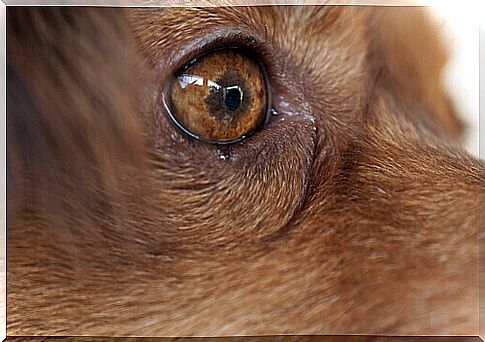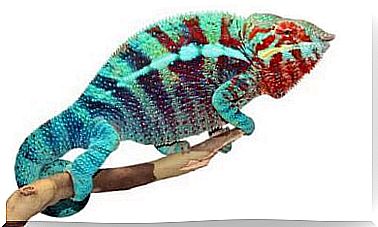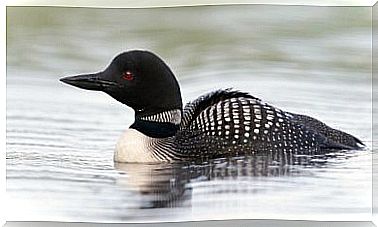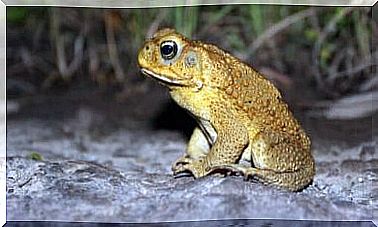Canine Ocular Thelaziosis: Causes, Symptoms And Treatment

This disease, more common in summer, is transmitted by the “fruit fly” and affects the mucous membranes of dogs. In the following article, we’ll talk about the causes, symptoms and treatment of Canine Ocular Thelaziosis so that you can detect it in your pet.
Causes of Canine Ocular Thelaziosis
Also known as the “eastern eyeworm”, canine ocular thelaziosis is a parasitic disease caused by nematode worms that measure three to seventeen centimeters in length. They “hide” under the membrane of the eyelid and the tear ducts .
The transmitter of the disease is the fruit fly, which sucks up the eye secretion and uses this substance as a place to deposit its eggs. When they hatch, the larvae remain in the conjunctival sac and in the conjunctiva for three weeks while they develop.
Canine ocular thelaziosis is more common in dogs and cats, although it can also affect other species such as wolves and foxes, as well as humans.
Canine Ocular Thelaziosis Symptoms
Dogs affected by this problem can have eye damage, including: excessive tearing, conjunctivitis, increased production of eyelid, involuntary eyelid contraction, ulcers and corneal inflammation.
If the canine ocular Thelaziosis is not treated, it can cause serious infections and a large number of worms, which cause temporary blindness, or even permanent.
Owners of an affected pet may notice that the eyes (one or both) become inflamed and secrete a white or greenish substance, which attracts more flies and spreads the disease. Also, it is likely that the dog change some habits and do your best to scratch your face with your front paws to soothe the itching.

It is necessary to pay attention and observe if flies are flying around the animal, because this means that they are feeding on its eye secretions. If you gently open the dog’s eyelid, you will see some white worms that move quickly in front of the retina and hide from the light.
Prevention and Treatment of Canine Ocular Thelaziosis
It is essential to control the infection in dogs that live outdoors or in gardens where there are fruit trees, as these are the fruit fly’s favorite places. In addition, you should pay attention to the organic waste that you leave to rot in the trash, because it attracts the insects .
We also recommend protecting pets with the famous “pipettes” that prevent the development of fleas, ticks and other parasites, such as fly larvae. This must be done every year, but with greater attention during the summer, a time when infectious and bacterial diseases proliferate the most.
If there are small children at home, between three and six years of age, you should be even more careful, as they are vulnerable to contagion by infection, especially in the summer and autumn, the months when the fly is active.
Once you’ve identified the worms in your dog’s eye, it’s urgent to take him to the vet so they can be removed. The procedure is performed manually, with forceps or sterile cotton swabs, after washing the area with a saline solution.

In addition, the professional will apply a nematicide drug to prevent the parasite stay alive and move on to another phase of your life, especially to eliminate eggs that are not easily noticeable. If canine ocular thelaziosis is treated in time, symptoms subside within three days.
Dogs that have suffered some more serious sequelae, such as ulcerations or keratitis, should receive adequate treatment as soon as the vet make sure there are no worms left in the animal’s eyes.









